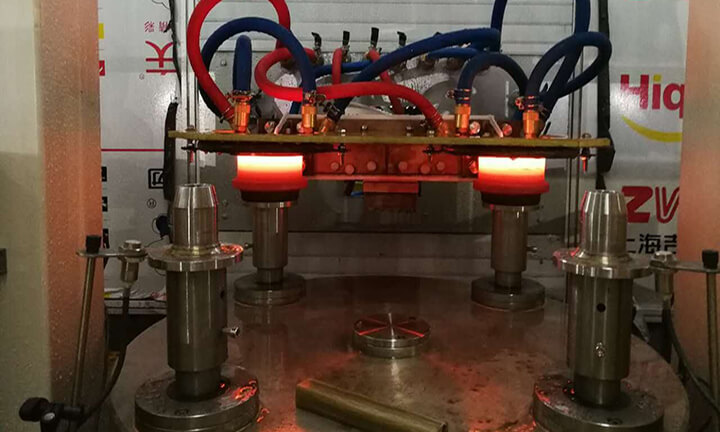- 07
- Dec
Mechatronics Quenching Machine
Mechatronics Quenching Machine
With the continuous development of metal heat treatment technology, a complete set of electromechanical induction heating equipment has formed a variety of products and serialized products. The service method has formed a one-step “turnkey” engineering method, and handed to the user a set of excellent and reliable performance, safe and convenient operation, high efficiency and energy saving, precise environmental protection, high process complexity and information integration in one, and excellent quality Mechatronics induction heating equipment.

The mechatronics induction heating equipment uses the computer to control the production and quality management system online, which can monitor the position of the workpiece, moving speed, heating, gap, cooling time, heating power, quenching medium flow and temperature, etc., and complete display and printing. The heat treatment parameters of a part are memorized and can be retrieved at any time. The equipment has anti-magnetic, anti-interference, anti-corrosion, sewage and oil-water separation facilities. During the quenching operation, the transformation amount of the mechanical main drive reaches the level of 0mm, and the reset accuracy of repeated motion can reach 0.0005mm.
Main functions of automatic control system
①Chain control: interlock control of the relevant electrical appliances in the system to meet the technological requirements.
② Process flow control: Use the superior parameter setting and control functions of this system to optimize the production process of the production line and record it in the system. Use this parameter to directly control the operating speed and heating power to achieve the best match between the heating power and the operating speed. .
③Production process management: The system makes full use of the superiority of the computer to store various parts quenching processes in the computer, so that users can reduce adjustment time when changing products and improve production efficiency.
④ Production monitoring: use color screen to dynamically display system related parameter curves, such as running linear speed, voltage, current, set power, heating temperature and other parameters in heating.
⑤Data management: record historical data, establish a running database, and archive and manage user processing procedures and process parameters. Convert historical data into archive files, retrieve them at any time and display them graphically, and make various real-time reports.
⑥Alarm monitoring display: Cooperate with power supply circuit, mechanical transmission circuit, circulating cooling water system and other parts to perform comprehensive monitoring. When any abnormality occurs in the circuit or the operating conditions change, the user can prompt or alarm, and the user can perform related processing according to the alarm prompt Ensure that the equipment can operate normally.
⑦Networking function: The system can use other computers to monitor the operating status of the entire system at different locations.
